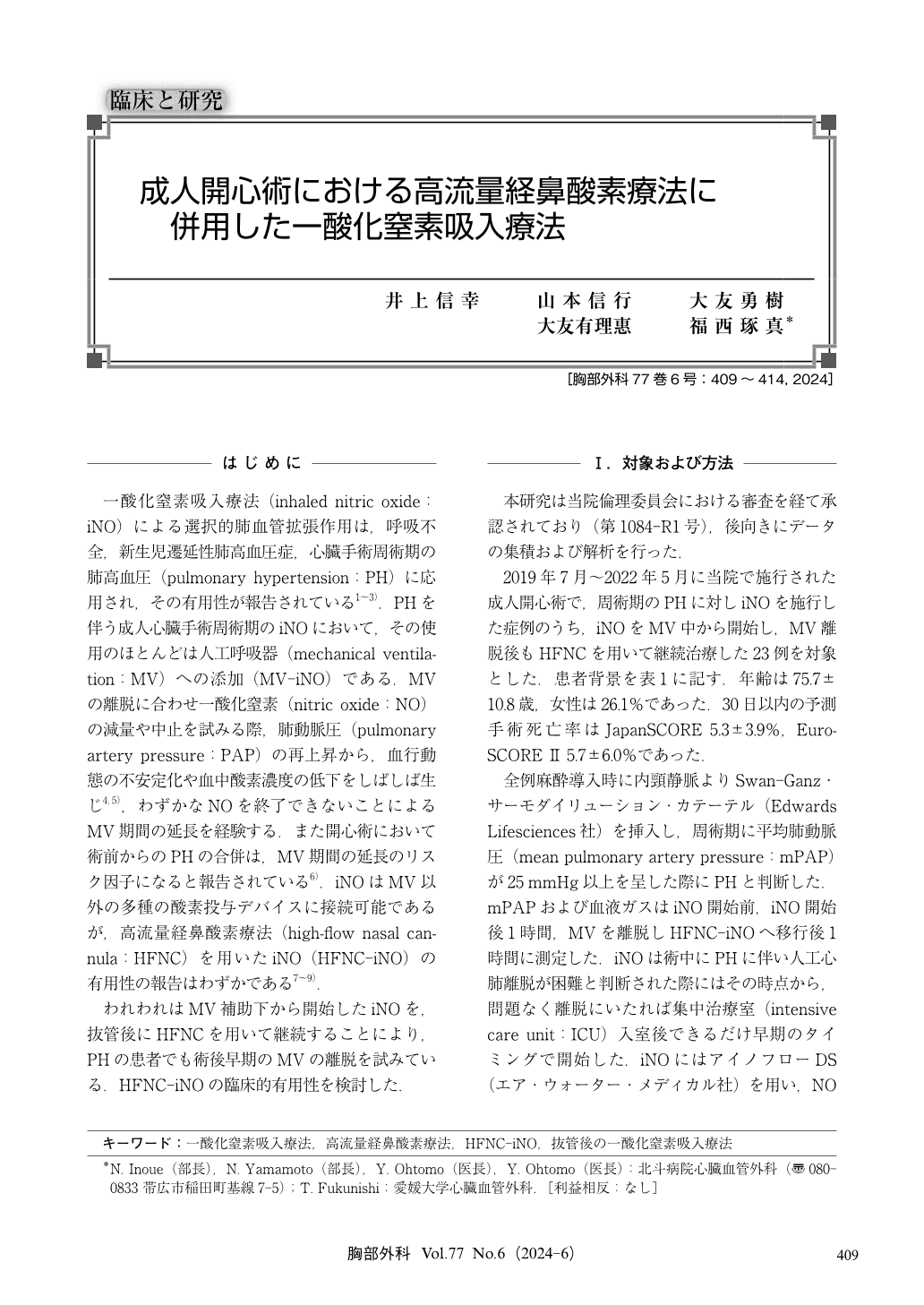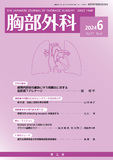Japanese
English
- 有料閲覧
- Abstract 文献概要
- 1ページ目 Look Inside
- 参考文献 Reference
一酸化窒素吸入療法(inhaled nitric oxide:iNO)による選択的肺血管拡張作用は,呼吸不全,新生児遷延性肺高血圧症,心臓手術周術期の肺高血圧(pulmonary hypertension:PH)に応用され,その有用性が報告されている1~3).PHを伴う成人心臓手術周術期のiNOにおいて,その使用のほとんどは人工呼吸器(mechanical ventilation:MV)への添加(MV-iNO)である.MVの離脱に合わせ一酸化窒素(nitric oxide:NO)の減量や中止を試みる際,肺動脈圧(pulmonary artery pressure:PAP)の再上昇から,血行動態の不安定化や血中酸素濃度の低下をしばしば生じ4,5),わずかなNOを終了できないことによるMV期間の延長を経験する.また開心術において術前からのPHの合併は,MV期間の延長のリスク因子になると報告されている6).iNOはMV以外の多種の酸素投与デバイスに接続可能であるが,高流量経鼻酸素療法(high-flow nasal cannula:HFNC)を用いたiNO(HFNC-iNO)の有用性の報告はわずかである7~9).
Inhaled nitric oxide (iNO) therapy is commonly used to improve pulmonary hypertension and oxygenation in adult patients undergoing open heart surgery, mostly being applied to mechanical ventilation (MV). We often face rebound of pulmonary artery pressure (PAP) after reduction or discontinuation of iNO therapy, resulting in prolonged MV. Twenty-three cases, to which iNO therapy during MV (MV-iNO) were initiated, then continuously treated with iNO therapy using high-flow nasal cannula (HFNC-iNO) after extubation, were retrospectively investigated. During MV-iNO, mean PAP (mPAP) was significantly lower than before starting iNO therapy (p<0.001). Also, mPAP on HFNC-iNO was significantly lower than mPAP before iNO therapy during MV (p<0.001). There was no significant difference of mPAP between MV-iNO and HFNC-iNO (p=0.38). MV was discontinued in 330 minutes (median), oxygenation was maintained after switching from MV-iNO to HFNC-iNO and there were no cases of reintubation, perioperative mortality, or adverse events due to iNO therapy. HFNC-iNO is considered as useful method in maintaining decreased mPAP and improved oxygenation after extubation in adult patients after open heart surgery.

© Nankodo Co., Ltd., 2024


